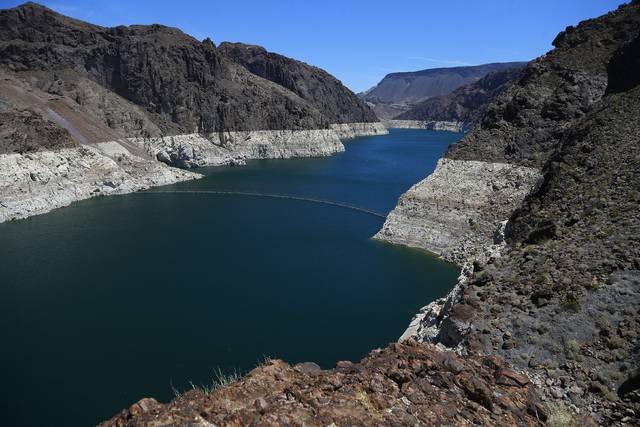DENVER — Seven U.S. states in the Southwest that depend on the overtaxed Colorado River have reached tentative agreements on how to manage the waterway amid an unprecedented drought, officials said Tuesday.
The announcement was a long-awaited step toward preserving the river, which supports 40 million people and 6,300 square miles (16,300 square kilometers) of farmland in the U.S. and Mexico.
“We have, after many years of discussion and negotiation, a real milestone,” said James Eklund, a water lawyer who represents Colorado in the interstate negotiations on the river.
A nearly two-decade-long drought has drained the river’s two largest reservoirs, Lake Mead and Lake Powell, to alarmingly low levels.
The U.S. Bureau of Reclamation, which manages major reservoirs across the West, says the chances of a shortfall in Lake Mead are 57 percent by 2020.
The reservoir has never fallen low enough to trigger a shortage before. If it happens, mandatory cutbacks would hit Arizona, Nevada and Mexico first.
The drought contingency plans announced Tuesday are not designed to prevent a shortage in the river system, but to manage and minimize the effects.
The two major components of the plans cover the Upper Basin, where most of the water originates as Rocky Mountain snowfall, and the Lower Basin, which consumes more of the water because it has more people and more farms.
Colorado, New Mexico, Utah and Wyoming are in the Upper Basin. Arizona, California and Nevada are in the Lower Basin.
The Lower Basin plan is detailed and specific, but the Upper Basin plan outlines what steps the states would take if things get worse, said Karen Kwon, Colorado’s assistant attorney general.
It will likely be next year before all seven states and the U.S. government approve the plans, Kwon said. Mexico agreed last year to participate in drought planning.
Reaching the agreements was a complex and delicate task because the river is not controlled by a single agency. Instead, it is governed by interstate compacts, international treaties and court rulings, known collectively as the law of the river.
———
Follow Dan Elliott at http://twitter.com/DanElliottAP. His work can be seen at https://www.apnews.com/search/Dan%20Elliott.


